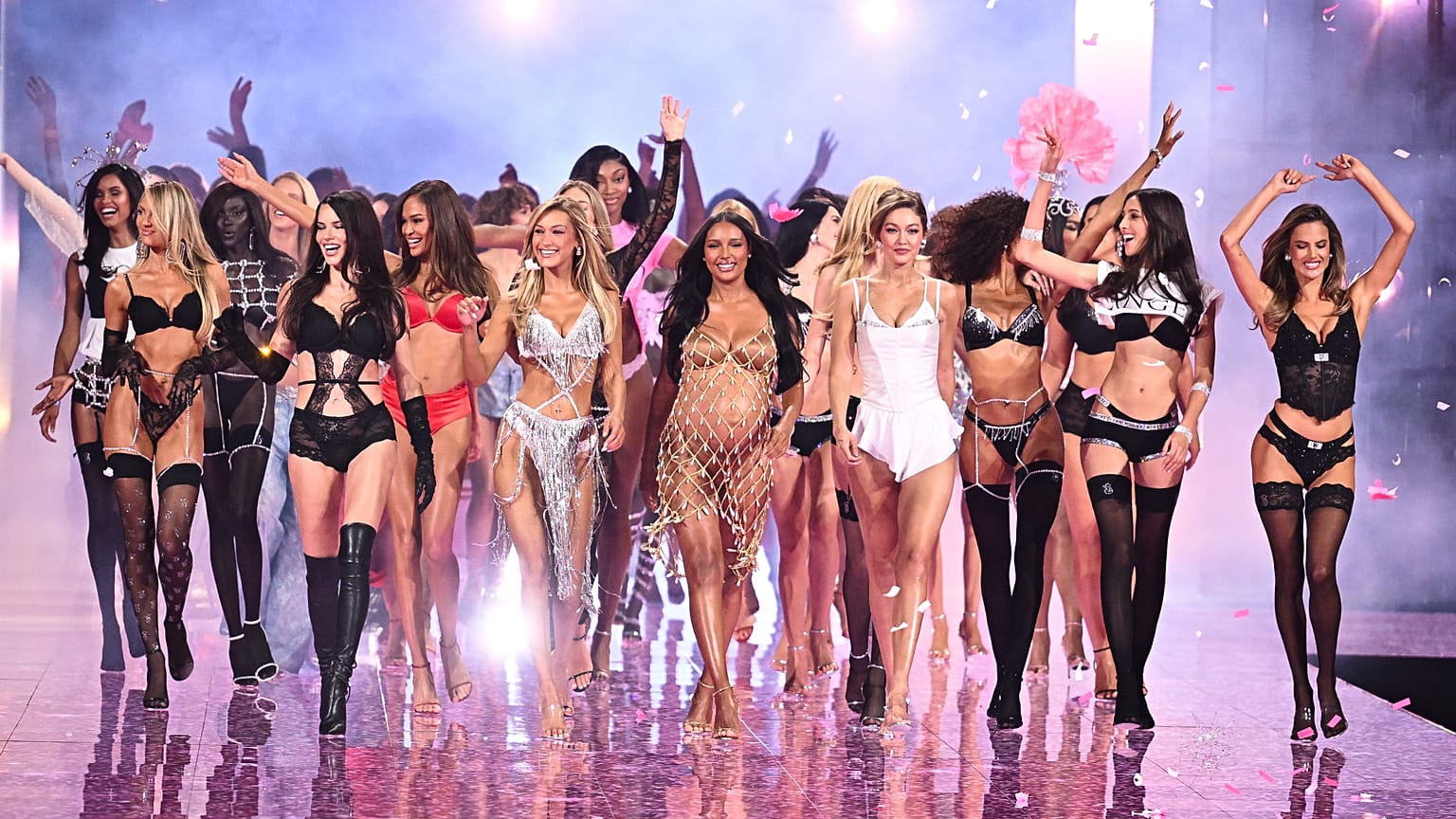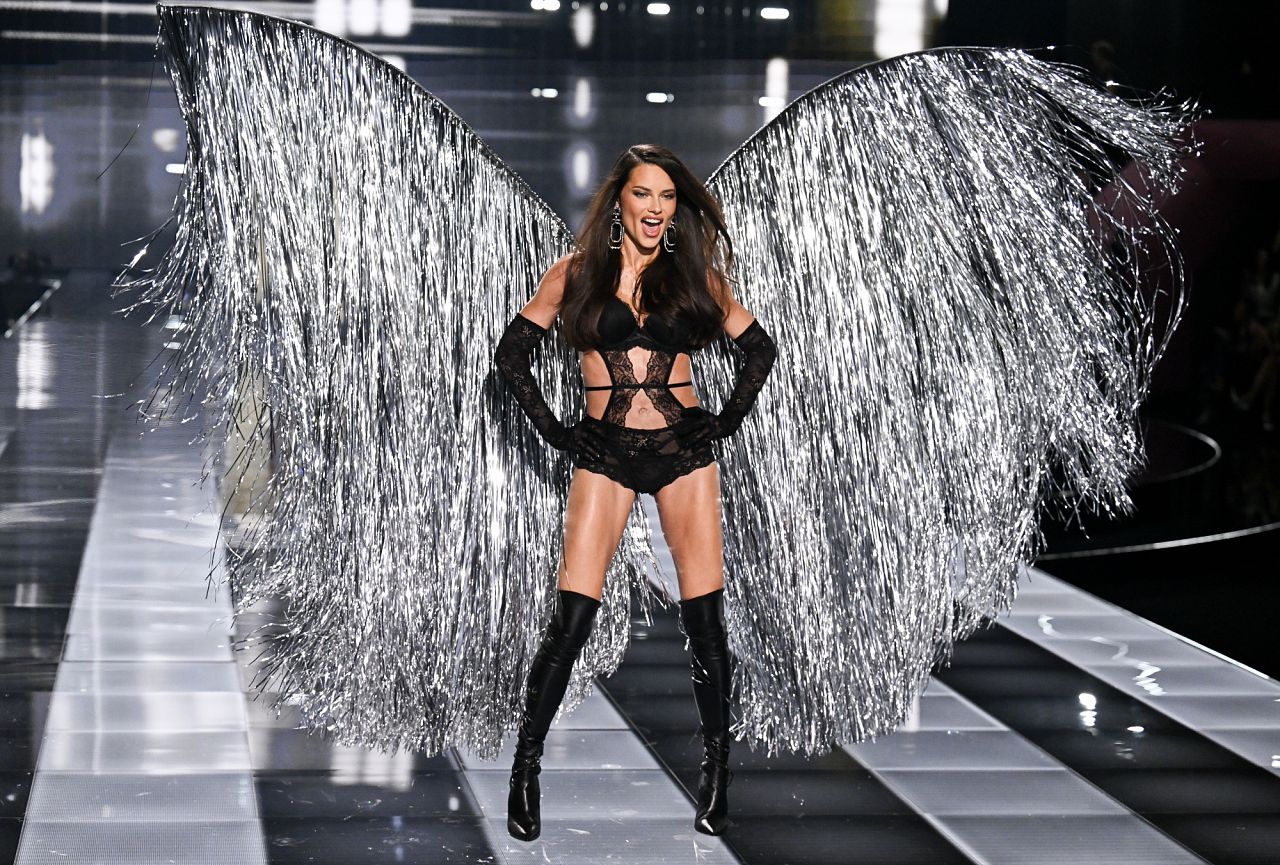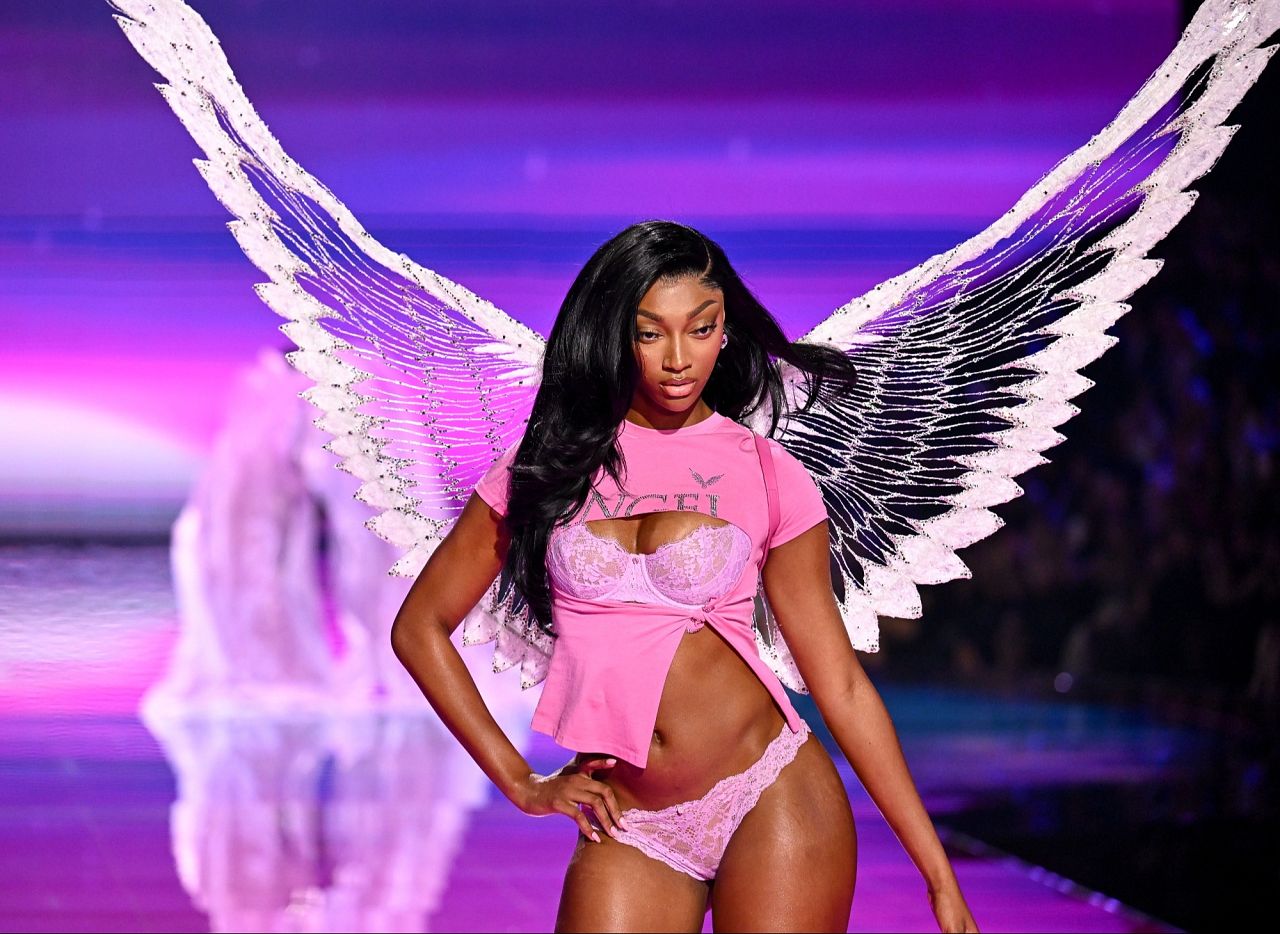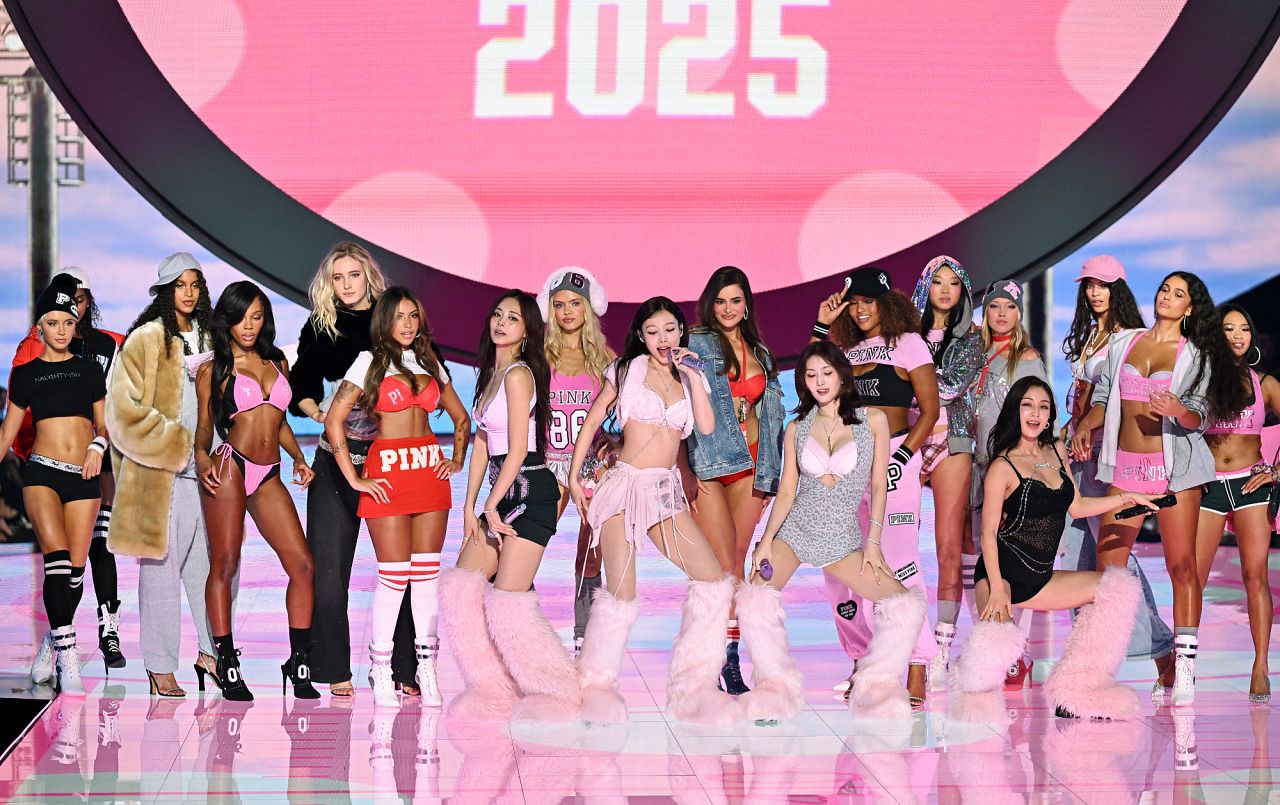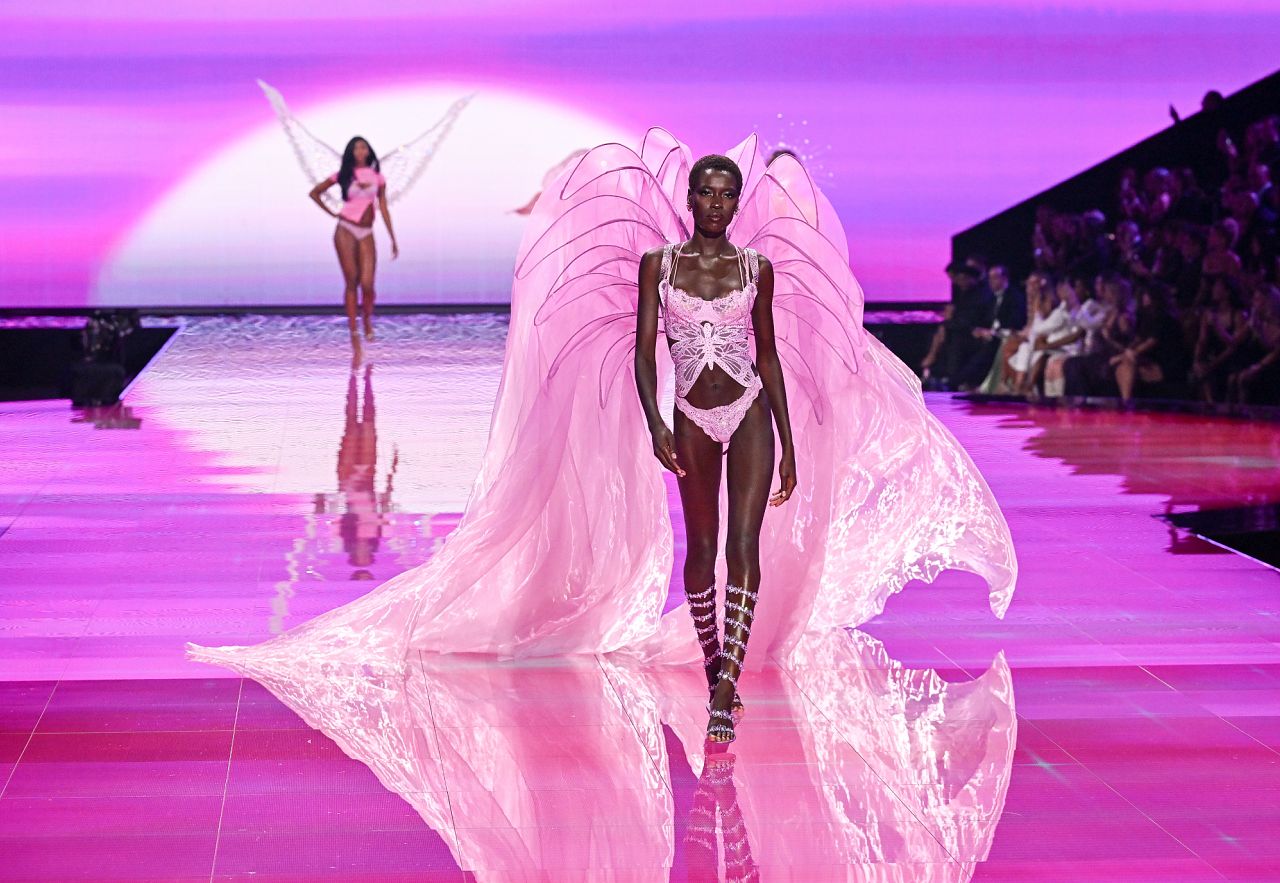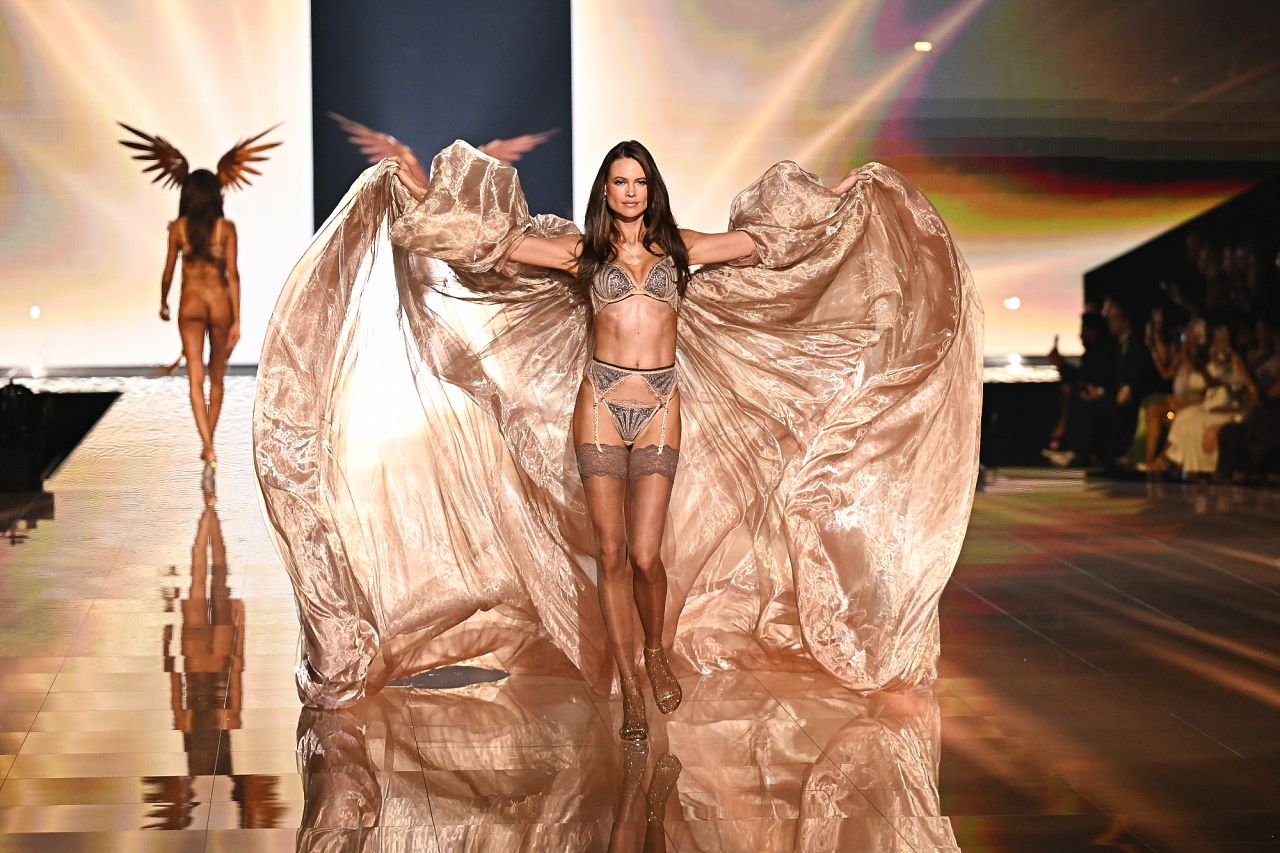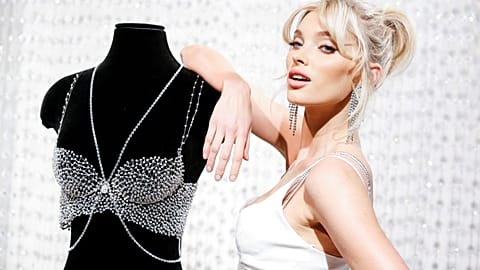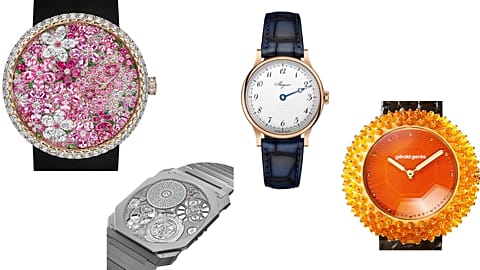Though originally designed as a parade to promote their latest collections, Victoria's Secret's Fashion Show has become an unmissable date in the cultural calendar for millions of viewers. Leticia Batista Cabanas looks at what sets it apart from its European counterparts.
Earlier this week, close to three million people tuned in to watch the 2025 edition of the Victoria’s Secret Fashion Show - the high-profile catwalk event where near-naked models and celebrities take over the runway.
Like every year, household names such as Adriana Lima, Gisele Bündchen, and sisters Gigi and Bella Hadid strolled in different variations of the brand’s bejewelled bikinis and underwear sets. The runway stayed true to the label’s signature mix of fantasy and sensuality: crystal-studded lingerie, lace corsets, satin bodysuits, and dramatic wings or capes that echoed the show’s early-2000s heyday. Each look was paired with oversized jewellery, feathered accessories, and glossy makeup, to match the unmistakable Victoria’s Secret aesthetic of hyper-glamour and spectacle that has long made the show a global pop-culture staple.
This year’s event also introduced a few firsts. It marked the debut of a professional athlete on the runway, WNBA star Angel Reese, who wore a custom floral lingerie set with feathered wings. It also featured the first ever K-Pop performance, the South Korean group TWICE, and the first latinx performance with Karol G’s appearance. Both moves were an effort to diversify Victoria’s Secret’s image and connect with younger, global audiences.
Although talk about body positivity, inclusivity, and the objectification of women dominate the fashion industry, it’s striking that an event so tied to a specific kind of glamorised beauty thrives. The Victoria’s Secret Fashion Show continues to celebrate an ultra-stylised, one-dimensional vision of femininity, yet it still attracts millions of viewers and hefty investment. The production remains a multi-million-dollar enterprise, powered by sponsors, celebrity partnerships, and streaming deals.
So how did a lingerie parade, originally designed to promote the brand’s intimates and sleepwear collections, achieve cultural phenomenon status? And a whole lot of glitz, glitter and glamour along the way…
Exclusivity versus spectacle
The key to Victoria’s Secret’s success lies within its branding and good old American showmanship. When the company staged its first fashion show in 1995, it was simply a marketing tool to promote its lingerie and sleepwear collections. Unlike the discreet displays of Paris or Milan, Victoria’s Secret immediately treated its runway like a theatrical stage instead of a simple sales floor, as they realised that lingerie could be mass marketed by selling a fantasy to millions who could watch from the comfort of their homes.
Through the late 1990s and early 2000s, Victoria’s Secret built a myth around its models and its image. The “Angels”, adorned with crystal wings, became central to its storytelling. This consistent visual branding created something other fashion weeks lacked: continuity.
Paris, Milan and London prized designer individuality; Victoria’s Secret offered a single, repeatable identity that was amplified by its televised format. By moving to network prime time in 2001, the company turned a retail promotion into a global broadcast, with supermodels like Tyra Banks and Gisele Bündchen walking alongside live performances by stars such as Justin Timberlake or Taylor Swift. The idea was to merge fashion, pop music, and mainstream entertainment.
So while the runways of Paris, Milan, and London speak to insiders, the Victoria’s Secret Fashion Show speaks directly to consumers and seeks to democratise fashion by inviting viewers to participate in a spectacle of aspiration rather than artistry.
This year’s Victoria’s Secret Fashion Show drew around three million live viewers worldwide, while European fashion shows - including those at Paris or Milan Fashion Week - pull in only hundreds of thousands of livestream viewers per runway and rely more on press coverage and social media reach than on mass broadcast audiences.
In 2014, the Victoria’s Secret Fashion Show had its peak: it drew more than nine million U.S. viewers and was broadcast in nearly 200 countries, effectively turning a retail campaign into a global cultural export. Shortly after, in 2019, a sharp drop in viewership and public backlash over the exclusion of plus-size and transgender models forced the company to cancel the Fashion Show.
But its revival in 2024 and 2025 came with force, showing that the brand is still strong: Victoria’s Secret & Co. currently has a market cap of about US $2.42 billion (€2bn) as of October 2025, and their latest reports show a 36% gross margin.
So while French and Italian houses define their power through scarcity and heritage, Victoria’s Secret has built its influence through ubiquity and performance. Chanel or Dior could never risk turning their haute couture runways into pop concerts without undermining their exclusivity. Victoria’s Secret, by contrast, operates within mass-market retail, a sector that thrives on visibility.















